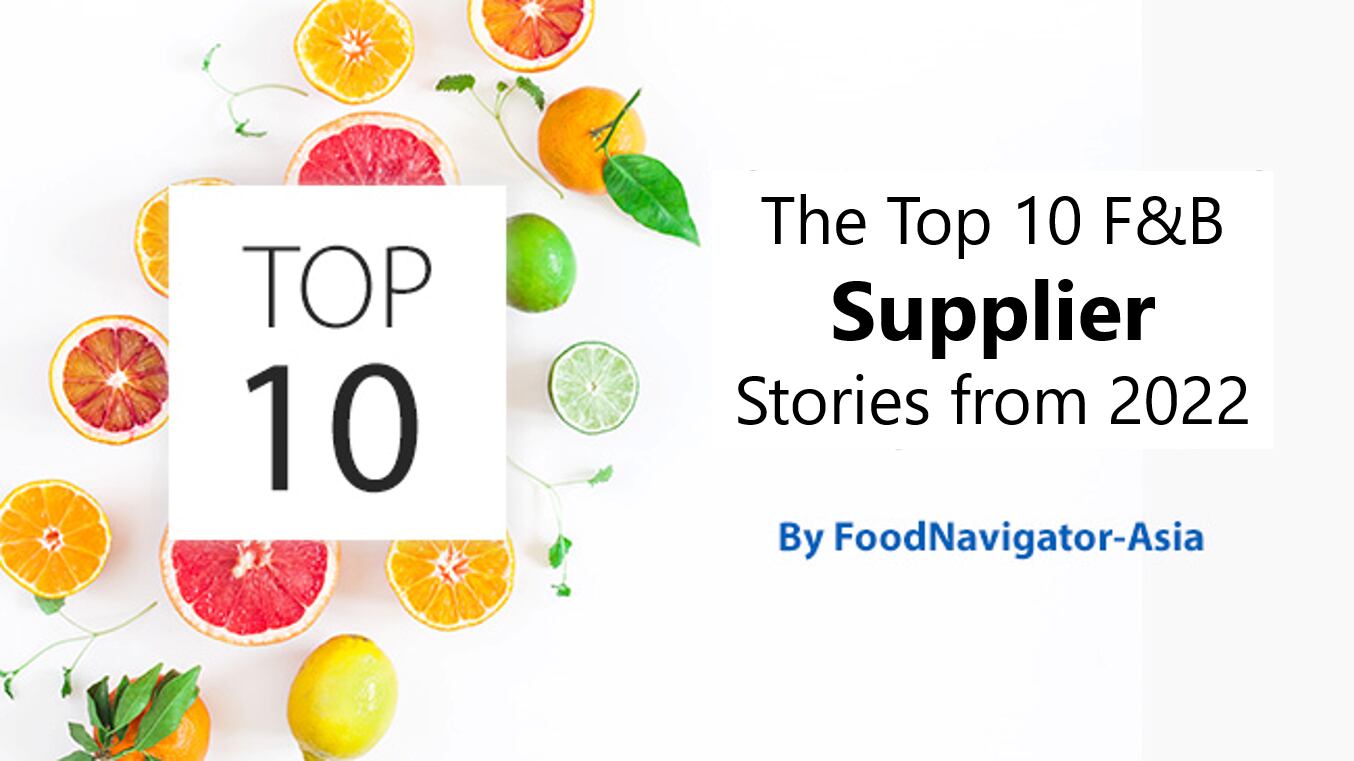Safety over shelf-life: Thai consumer concerns over long expiry dates driving demand for clean label ingredients
Rising awareness amongst Thai consumers regarding the potential unhealthy connotations associated with long expiry dates is a key factor driving up the demand for clean label food ingredients in the country, according to leading industry experts.
Although the onset of the COVID-19 pandemic generally led consumers worldwide towards an increased preference for foods and beverages that were more affordable and could last longer, the time of panic-buying has now passed and Thai’s seem to be paying more attention to the labels of their purchases.
This has in turn led to rising concerns over long expiry dates, the potential additives in these products conveying these as well as the potential long-term health impacts, according to leading starch firm SMS Group.
“In Thailand it is now very common that consumers across all demographics will read the labels of the food products they are buying, and the general consensus is that the less non-natural additives are on the label the better, and none is of course best,” Thailand Country Sales Manager for Food Application Chutmongkon Raisanguan told FoodNavigator-Asia.
Fibre first: Tetra Pak tests plant-based barrier to replace aluminium for carton packaging – VP interview
Tetra Pak tested a fibre-based barrier earlier this year to replace the conventional aluminium layer on its aseptic carton packaging in a bid to slash carbon emissions while still maintaining shelf life.
The aluminium layer is critical in keeping the contents in the cartons safe for consumption. Despite being thinner than human hair, the aluminium layer contributes a third of the greenhouse gas emissions linked to materials used by Tetra Pak.
This was why the plant-based innovation was introduced in the first half of 2022, said the VP for Packaging Materials, Sales and Distribution Solutions, Marco Marchetti.
Path to wellness: Chinese demands for healthier products outstripping other Asia markets
Chinese consumers are leading regional demands for healthier, more nutritious food, such as low- to zero-sugar products and high fibre content, for benefits such as better gut health and quality of life.
According to the General Manager of Greater China at global F&B ingredients firm Tate & Lyle PLC (Tate & Lyle), Remington Zhu, the two significant demographics to focus on are those over 65 and the sporty younger generation.
“Consumer trends in China are highly diversified. The ageing population, those aged around 65 to 70 and above, care about longevity and quality of life, whereas the younger generation has a higher awareness of health and engages in various sports. These consumers demand more healthy and nutritional food, especially those residing in cities such as Shanghai and Beijing," he said.
To be or nut to be: Olam’s new D2C brand Re- on juggling consumer demand for traceability, sustainability and health
Olam’s new direct-to-consumer (D2C) nuts brand Re- highlighted its strategy of tapping into three major trends – traceability, sustainability and health – amidst its plans earlier this year to expand from its Singapore launchpad into wider Asia, the US and UK.
The brand launched its range of nuts in March 2022 after two years of research and development.
The almond and cashew range is 100% natural, responsibly grown and traceable to the farms that produce them, claimed its SVP and CMO, Venaig Solinhac.
“By natural, we mean it is non-GMO, produced using sustainable farming practices and the nuts can be traced back to its farms."
Plant-based future: New formats and demographics the key to increased consumer adoption – Kerry
Offering plant-based meat in a wider range of formats and targeting new demographics such as toddlers is key to attract new and loyal consumers, according to Kerry.
For instance, companies could design plant-based meat as part of a toddler’s meal or come up with plant-based seafood.
Didier Chanove, business development director, plant alternatives at Kerry pointed out the above earlier this year, whilst also highlighting that the vast price gap with conventional meat is deterring Asian consumers in purchasing plant-based meat.
Citing findings from the company’s study, he said that it was mainly the Gen-Z consumers who were driving the plant-based meat adoption.
Appeal to appetite: Strong packaged food demand in China due to population boom, increased health awareness – Ingredion VP
The Chinese packaged food sector is set to experience market growth at a CAGR of 5.6% from 2021 to 2026, especially for snacks, savouries, dairy and beverages.
The appetite is driven by the population boom, rise of the middle class, and demand for better consumption experience and healthier choices, said the VP and GM for North Asia and APAC Commercial of ingredients firm Ingredion, Jacques Guglielmi.
To fulfil this demand, the firm launched its third modified starch manufacturing site earlier this year in Shandong, China, called Shandong South.
“Postbiotics promise’: Morinaga on huge opportunities across functional food and beverages
Japanese dairy giant Morinaga has detailed how it believes postbiotics hold great promise in the future of functional food and beverages.
Dr Chyn Boon Wong, lead research associate at Morinaga Milk Industry pointed out that over the past five years, 85% of food and beverage as well as supplements launched in North America, Europe and APAC contained the word postbiotics as part of the product name, description, claims, or ingredients.
“The biotics space is expanding, we have prebiotics, probiotics and now the postbiotics," she said.
“Due to its nature, postbiotics hold great promise in the food and beverage segments, mainly because they are de-activated."
Beyond just a trend: Policy measures further pushing Asian food colouring sector towards natural
Regulatory pressure from Asian governments is expected to drive food and beverage firms to use more natural colours, with it rapidly becoming less of a trend and more of a necessity.
Natural colours and colouring foods are nothing new to the food and beverage industry in APAC, but apart from the Oceania markets of Australia and New Zealand, food firms in many Asian countries have been slower to adopt.
According to food colours specialist firm Oterra, regulatory limitations in the various markets are expected to be a big driver for companies to convert from artificial to natural options.
“The trend here in APAC for food colours is definitely towards naturality, but apart from ANZ in all the other Asian markets things depend very much on the regulatory landscape,” Oterra Regional Marketing Manager Carel Soo told FoodNavigator-Asia.
Paradoxical pressures: APAC consumers demanding both food indulgence and cost-savings
Both indulgence and affordability have emerged as major APAC consumer demands for food and beverages, leaving a manufacturers with a paradoxical challenge that can only be solved using innovation.
The COVID-19 pandemic can be seen as a major driver for both the indulgence and affordability trends – for the former, after emerging out of lockdowns many consumers are now in pursuit of enjoyment whereas for the latter the pandemic has left a multitude of socioeconomic and inflationary pressures in its wake, catalysed further by the Russia-Ukraine crisis.
It has now fallen to food and beverage firms in to solve this somewhat paradoxical yet undeniably logical dual conundrum, especially in the APAC region which has long been known to be very price-sensitive.
“Especially this year, cost-savings has been emerging as a very big trend in Thailand and multiple other Asian markets, and this really is not a surprise with people expecting more value for their money now,” Kemin Associate Marketing Director Asia Joanne Tan told FoodNavigator-Asia.
Immunity partnerships: Kirin targets SEA dairy, functional drinks collaboration with award-winning ingredient
Japanese firm Kirin is expanding its presence in South East Asia with its flagship postbiotic ingredient IMMUSE, with collaborations with major dairy companies underway.
Studies have shown that it could support the maintenance of the immune system by stimulating the plasmacytoid dendritic cells (pDCs), which are the commander-in-chief of the immune system.
It has been used in a range of Foods with Function Claims (FFC) in Japan, including the firm’s very own brand iMUSE. Products containing IMMUSE can claim to maintain immune function.
The iMUSE branded products also took home the Immune Support Product of the Year in the recent NutraIngredients-Asia Awards 2022.





